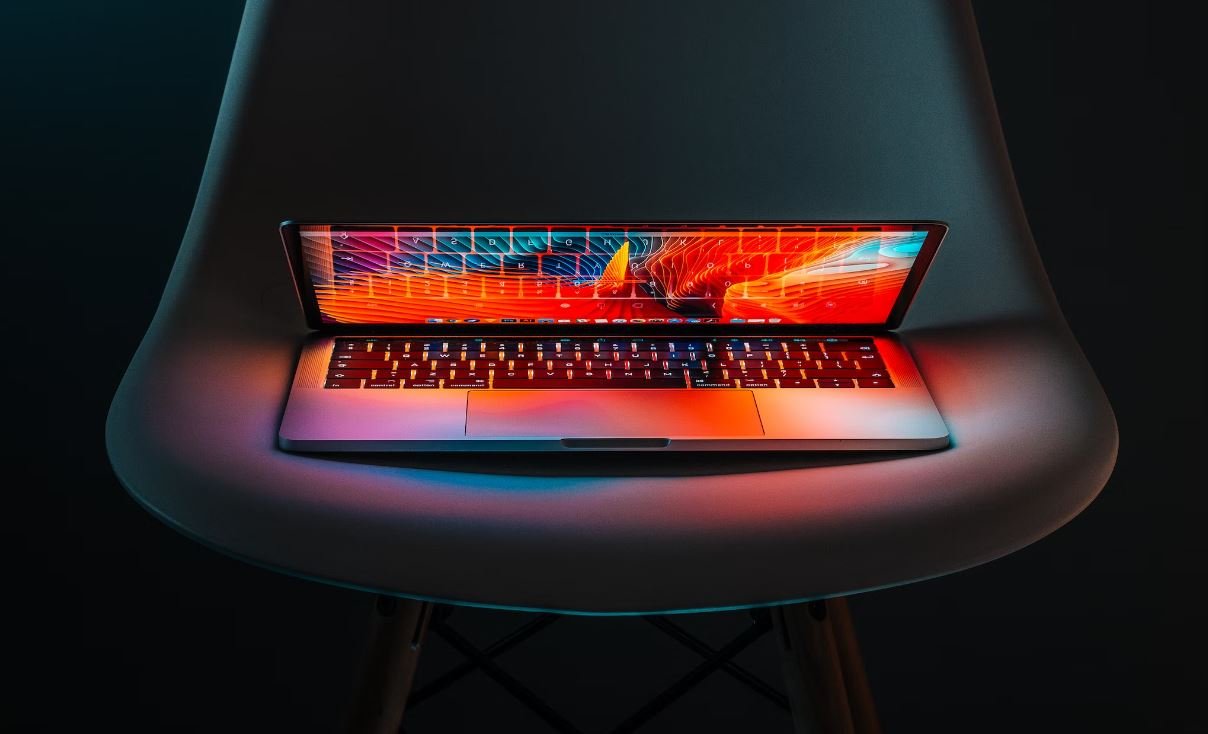GPT and MBR Partition Table
When it comes to partitioning a hard drive, two common methods are used: **GPT** (GUID Partition Table) and **MBR**
(Master Boot Record). These partitioning schemes dictate how the data on the hard drive is organized and accessed.
Understanding the differences between GPT and MBR can help you make informed decisions about your storage setup.
Key Takeaways
- GPT and MBR are two different partitioning schemes used for organizing data on hard drives.
- GPT allows for more partitions and supports larger drives than MBR.
- MBR is compatible with older systems and is often used for booting legacy operating systems.
- Both GPT and MBR have their advantages and disadvantages depending on the specific use case.
GPT Partition Table
**GPT**, short for GUID Partition Table, is a newer partitioning scheme that has become the industry standard for
many modern systems. GPT works on both **UEFI** (Unified Extensible Firmware Interface) and BIOS (Basic Input/Output
System) systems, making it highly versatile. One interesting aspect of GPT is that it uses **GUIDs** (Globally
Unique Identifiers) to identify partitions, allowing for a theoretically unlimited number of partitions on a
single drive.
MBR Partition Table
**MBR**, or Master Boot Record, is the older partitioning scheme that was widely used in the past and is still
compatible with many systems today. MBR supports up to four primary partitions or three primary partitions and an
extended partition that can contain multiple logical partitions. MBR is commonly used with **BIOS** systems and
older operating systems that do not support GPT.
GPT vs MBR: Advantages and Disadvantages
| GPT | MBR | |
|---|---|---|
| Partition Limit | No practical limit, theoretically unlimited | Supports up to four primary partitions or three primary partitions and an extended partition with logical partitions inside |
| Drive Size Support | Supports drives larger than 2TB | Limited to drives up to 2TB in size |
| Compatibility | Compatible with both UEFI and BIOS systems | Compatible with BIOS systems, not UEFI |
GPT and MBR: Use Cases
GPT is commonly used for **modern systems** and is ideal for drives larger than 2TB, as it allows for efficient use
of available space. MBR, on the other hand, is still used in certain scenarios such as **legacy systems** or
booting older operating systems that do not support GPT. It is important to consider your specific needs and
compatibility requirements when choosing between GPT and MBR partition tables.
GPT and MBR: Considerations
When deciding between GPT and MBR, it is essential to consider factors such as **system compatibility**, **drive
size requirements**, and **partition limits**. Additionally, keep in mind that some operating systems or software
may have specific requirements or limitations when it comes to using either GPT or MBR partition tables.
GPT and MBR: Which Should You Choose?
There is no definitive answer to which partition table is better, as it depends on your specific needs and
requirements. Consider the **size of the drive**, **compatibility with your system**, and **any specific software
or operating system requirements**. Ultimately, choose the partitioning scheme that best suits your setup and
delivers the features you need.

Common Misconceptions
Misconception 1: GPT and MBR partition tables are the same
One common misconception is that GPT (GUID Partition Table) and MBR (Master Boot Record) partition tables are the same. In reality, they are different partitioning schemes used on hard drives.
- GPT allows for larger partition sizes compared to MBR
- GPT provides redundancy by storing multiple copies of the partition table
- MBR is limited to four primary partitions, while GPT can have up to 128 partitions
Misconception 2: GPT is only supported by newer operating systems
Another misconception is that GPT is only supported by newer operating systems. While it is true that some older operating systems may not fully support GPT, many modern operating systems including Windows, macOS, and Linux can work with GPT partitioned drives.
- Windows systems with UEFI firmware can boot from GPT partitions
- Linux distributions like Ubuntu and Fedora support GPT partitions
- macOS can install and boot from GPT partitions on Intel-based Mac computers
Misconception 3: Converting between GPT and MBR is a simple process
There is a misconception that converting between GPT and MBR partition tables is a simple process. In reality, it can be a complex and potentially risky operation that requires careful planning and data backup.
- Converting from MBR to GPT involves reformatting the entire disk and may result in data loss
- Specialized partitioning tools are required for the conversion process
- It is important to understand the limitations and compatibility issues associated with the chosen partitioning scheme
Misconception 4: GPT is always superior to MBR
There is a misconception that GPT is always superior to MBR and should be used in all cases. While GPT offers certain advantages, such as support for larger drives and more partitions, MBR still has its uses and can be more compatible with certain legacy systems or devices.
- MBR is widely supported by older systems, including some embedded devices and game consoles
- MBR is more compatible with boot managers and disk utility tools
- In some scenarios, MBR may have better performance due to its simpler structure
Misconception 5: Changing partition tables won’t affect data on the disk
Lastly, there is a misconception that changing partition tables will not affect the data stored on the disk. This is incorrect as changing the partitioning scheme involves modifying the disk’s structure, potentially leading to data loss if not done correctly.
- It is crucial to back up all important data before attempting any partition table modifications
- Mistakes during the partitioning process can result in data corruption
- Consulting professional assistance or thorough research is recommended before making any partitioning changes

The Evolution of Hard Drive Partitioning
Partition tables are essential data structures used in computer storage devices to divide a physical drive into distinct sections or partitions. Two prevalent partitioning schemes are the GPT (GUID Partition Table) and MBR (Master Boot Record) partition table. This article explores their differences, benefits, and drawbacks.
GPT Partition Table Characteristics
| Characteristics | Details |
|---|---|
| Maximum Partition Size | 18.4 million TB |
| Backup Partition Table | Stored at the end of the disk |
| Partition Identification | Uses a globally unique identifier (GUID) |
| Support for Secure Boot | Yes |
The GPT partition table offers significant advantages over MBR, such as a much larger maximum partition size, improved reliability with backup partition tables, and the ability to support secure boot technologies.
MBR Partition Table Characteristics
| Characteristics | Details |
|---|---|
| Maximum Partition Size | 2.2 TB |
| Boot Method | Legacy BIOS booting |
| Partition Identification | Uses a 32-bit disk signature |
| Compatibility | Supported by older operating systems |
The MBR partition table, while limited in partition size and lacking built-in redundancy, enjoys broad compatibility with legacy systems, making it suitable for older operating systems and devices.
GPT and MBR Performance Comparison
| Metric | GPT | MBR |
|---|---|---|
| Number of Partitions | No practical limit | Up to 4 primary partitions |
| Disk Space Wasted | Negligible, due to alignment | 3-5% of overall space |
| Resilience to Corruption | Extremely resilient with backup tables | Prone to corruption and data loss |
GPT excels in terms of the number of partitions allowed and minimal disk space wastage, while offering superior protection against corruption and data loss.
Operating System Compatibility
| Operating System | GPT Support | MBR Support |
|---|---|---|
| Windows 10 | Supported (64-bit) | Supported |
| macOS | Supported | Supported |
| Linux | Supported | Supported |
Both GPT and MBR partition tables enjoy broad support across major operating systems, enabling seamless compatibility with various platforms.
Use Cases
| Use Case | GPT | MBR |
|---|---|---|
| High-capacity storage devices | Ideal | Limited |
| Legacy systems and older OSes | Compatible | Ideal |
GPT is preferred for high-capacity storage devices, while MBR is optimal for legacy systems and compatibility with older operating systems.
Risk of Data Loss
| Risk Factor | GPT | MBR |
|---|---|---|
| Protective Partition | Yes | No |
| Data Recovery Ease | Easy in case of disk corruption | Complex and challenging |
GPT provides added protection with a protective partition, making data recovery easier in the event of disk corruption compared to MBR.
Partition Conversion
| Conversion Method | GPT to MBR | MBR to GPT |
|---|---|---|
| Loss of Data | No | Yes (backup necessary) |
| Operating System Compatibility | Maintained | Requires a 64-bit OS |
Converting a GPT partition to MBR does not result in data loss, while converting MBR to GPT may require data backup and a 64-bit operating system for compatibility.
Secure Boot Support
| Secure Boot | GPT | MBR |
|---|---|---|
| Supported | Yes | No |
GPT, unlike MBR, supports secure boot, enhancing the system’s security measures.
Partition tables play a crucial role in hard drive organization, and understanding the differences between GPT and MBR is vital for optimal storage management. The choice between the two depends on factors such as storage capacity, system compatibility, and the need for features like secure boot or resilient data protection.
Frequently Asked Questions
What is GPT?
GPT, or GUID Partition Table, is a partitioning scheme used by modern computer systems to define the layout of hard disks or other storage devices. It is an improvement over the traditional MBR partition scheme.
What is the MBR partition table?
The MBR, or Master Boot Record, partition table is a legacy partitioning scheme that has been used for many years in computer systems. It has certain limitations compared to GPT, such as supporting up to four primary partitions and a maximum disk size of 2 terabytes.
What are the advantages of GPT over MBR?
GPT offers several advantages over MBR, including support for larger disk sizes (up to 9.4 zettabytes), a more robust and reliable partitioning structure, support for up to 128 primary partitions, and improved data redundancy through the use of backup partition tables.
Can GPT be used on all operating systems?
Most modern operating systems, including Windows (Vista and later), macOS (Version 10.4 and later on Intel-based Macs), and Linux (kernel versions 2.6.18 and later), can work with GPT partitions. However, some older operating systems may have limited or no support for GPT.
How can I convert a disk from MBR to GPT?
To convert a disk from MBR to GPT, you can use various disk management tools or utilities provided by your operating system. It usually involves backing up any existing data, deleting all partitions on the disk, and recreating them using the GPT partitioning scheme.
Can I convert GPT back to MBR?
Converting a disk from GPT back to MBR is more involved and often requires a complete reformatting of the disk, resulting in data loss. Therefore, it is generally recommended to make a backup of your data before attempting such a conversion.
Do GPT and MBR partitions coexist on the same disk?
No, GPT and MBR partitioning schemes are not compatible with each other. A disk can either be partitioned using GPT or MBR, but not both. However, some systems support a compatibility mode called hybrid MBR, which allows coexistence for dual-booting between certain operating systems.
Can I boot from a GPT partition with any BIOS?
Legacy BIOS systems typically do not support booting directly from a GPT partitioned disk. However, with the help of a small system partition called the EFI System Partition (ESP) and the Unified Extensible Firmware Interface (UEFI), it is possible to boot from GPT on systems that have UEFI firmware.
Are there any limitations to using GPT partitions?
While GPT has many advantages, there are a few limitations to be aware of. Some older operating systems may not have full support for GPT, certain bootloaders may have limited compatibility, and the process of converting from MBR to GPT can result in data loss if not done carefully. Additionally, not all computers have UEFI firmware required for booting from GPT.
Can I convert an external hard drive from MBR to GPT without data loss?
Generally, converting an external hard drive from MBR to GPT without data loss requires backing up and transferring the data to another storage device, then formatting the external drive as GPT and restoring the data. Make sure to have proper backups before proceeding with any disk partitioning or formatting operations.




